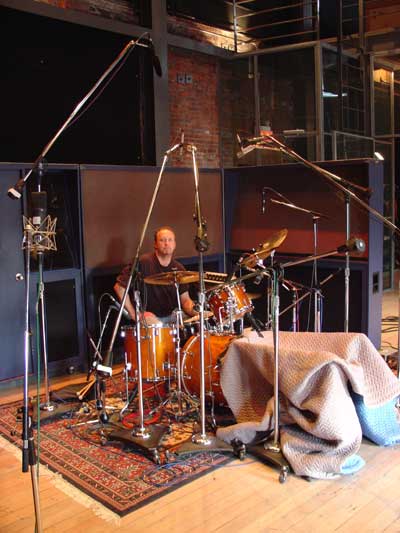April 1, 2014

*BUT IT GOES DEEPER!*
At the top echelons of playing you will be required to be so adept at playing with a click track that producers will require you to play ‘in a certain placement on the click track.’ And this is where the human being can do what a machine can’t do. This elevates the soul of a drum track in a truly organic human way that can be transcendant.
And between producer and drummer, here is how one of those interactions took place between myself and star producer/engineer Bob Rock.
“Phil I want you to keep your bass drum and hi hat dead on the click or just slightly on top and I want you to lay back your snare behind the click track. ….Ok? Let’s roll”
He was asking me to place different instruments very consistently in different minute positions on the click.
Have you ever heard the term ‘backbeat’ and wondered what it actually meant? Well this is what it means and it pertains to most often to the snare drum. This is advanced fine-tuning, but this is where you want to be skill wise. It is a good example of how deep the rabbit hole goes.
As I mention in the chapter about technique:
*THE LOPE OF THE GROOVE…*
is the very human ability to intricately adjust the placement and weight of certain instruments. In 1985, Idle Eyes toured with Toto and at that time, this is how Jeff Porcaro explained it to me:
As an example, the hi hat may be on the beat or slightly on top of the beat. The kick may be nailing the beat dead on and the snare may be back behind the beat.
What also affects the lope of the feel is the intentional dynamic changes inside the feel, regarding a given instrument. For example on a closed hi hat pattern, the 8th note just prior to the snare on beat 4 may be struck slightly harder with a slight release of tension on the pedal but just slight. These types of punctuations may also exist in different places throughout the pattern.
Again listen to Jeff Porcaro in this area. A tune like Jojo by Boz Scaggs is a really good example of Jeff in this area of lope.
So there is work to do in this area but the sooner you embrace and master this skill and the surrounding nuances, the sooner you’re on your way to doing very musically rewarding session work!
Remember, the term ‘master’ does not mean perfection. It means that the struggle remains but you have now gained the upper hand.
*FINALLY… MAKE THE CLICK TRACK YOUR FRIEND BECAUSE IT CERTAINLY IS MINE!*
I love playing to a click track. It’s an irrefutable reference point. No one can say ohh you’re slowing down here or speeding up there, which I might add happens all the time. All you have to say is ‘let’s put the click up and let’s check out the track against the click track’.
And sure enough you’re dead on the money at which point you say ‘Thank you mister click track!’
*IT’S A STUDIO CONSTANT!*
Either you are rushing or dragging or you’re not doing either. Period!






